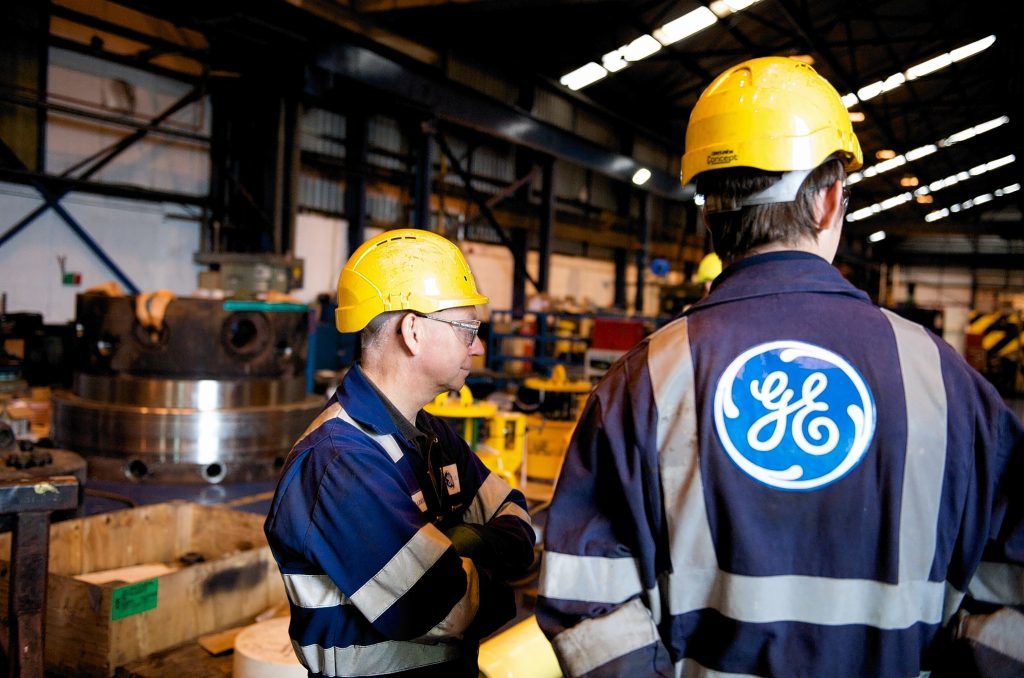
The biggest subsea and drilling challenge is trying to strike a balance in capacity versus capability of the workforce, according to a GE Oil & Gas boss.
Neil Saunders, chief executive and president for subsea systems and drilling, was forced to restructure his workforce alongside the rest of the industry, slashing his global subsea and drilling team of by several thousand.
Speaking to Energy Voice at OTC, he said:” “My biggest challenge is to balance capability versus capacity. The actions we have taken are capacity actions and we’ve tried hard to retain capability. We’ve been very fortunate being GE, because I can keep my factoring running and I’m actually doing work for other parts of the company.
“Believe it or not, in my subsea factories I’m machining aviation parts. I’m machining renewables parts. I have engineers who are seconded out to those businesses as well. That’s a fantastic thing I can do and then bring them back when I need as opposed to mothballing or even closing manufacturing facilities.
“But that’s a huge challenge and it’s very easy to say that you’re going to do that but to network the way we have and make that real is pretty tough.”
Three years ago, the company leader was part of push to attract the next generation of subsea experts.
“Talent is a huge concern,” he said.
“It was only three years ago that we were on a rallying call with universities to try and attract talent into the subsea space and show people that the equipment was cool and a career in engineering and subsea would have longevity.
“But unfortunately some of that talent that we attracted in we have had to restructure out and it’s a concern for us as a company and I know it’s a concern for our competition as well.
“We’ve ended up with quite a nice talent density, where we have retained capability through the cycle, but to the extent that we can attract talent into a segment, which is cyclical, is a worry for sure.”
Despite the talent pressures, Mr Saunders expect achieve “single-digit” growth this year.
He has his focus on a specific indicator – the amount of queries regarding rejuvenating stacked rigs – which is on the rise for GE.
“That would tell us that drilling contractors are looking to quote and have rigs working in ’18 and ’19, which means they are going to have start rejuvenating that equipment in the backed of ’17 and ’18. If that is an indicator, and we hope that it is, that has the potential to represent some growth for us,” he said.
The subsea expert is also starting to see green shoots further afield, including BP’s Mad Dog 2 project getting the green light.
Saunders said: “We are seeing the shoots of activity on quite a lot of tie-backs and potential projects in East Africa and more activity around further phases of projects that we are working on in Australia.
“I don’t know if I would be as bullish to say that we will make the estimates in quest in subsea, but we will see incremental movement on 2016 for sure.”
“There are also some every interesting models we are seeing in the North Sea, which try and unlock some of those tie-backs and get them working. Nexen are active, Alpha want to be active, Norway is representing growth on 2016 and Statoil is very active. They are doing Sverdrup, so I think the subsea cost position for customers is improving for sure.”
But that capacity versus capability balance will need to be closely monitored as the industry starts to “catch-up” with the oil price, according to Saunders.
“I’m seeing an industry which is catching up with our oil price position and looking to make things work at that level, so it feels like activity is going to pick up,” he said.
“We feel like ’17 is going to be tough for us, but we feel like in ’18 we are on a growth curve again from a subsea production projects standpoint. That means we feel like we are going to engineer again in the backend of ’17 and we are going to be procuring out of supply chain through ’18.”
Recommended for you
